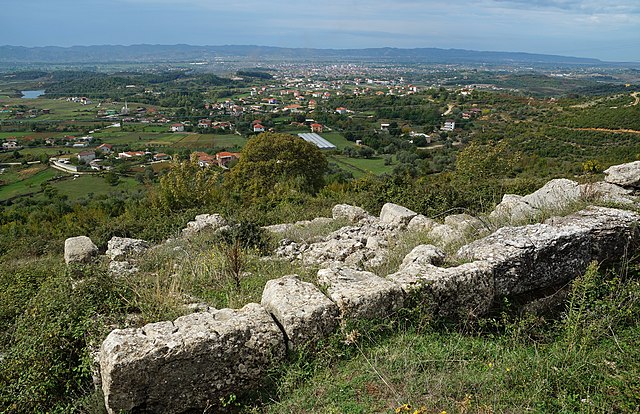Zgërdhesh village lies on a hill south of the highway connecting Kruja with Fushë Krujë and it is part of the Fushë Krujë Administrative Unit. The ancient town of Zgërdhesh once occupied an area of 10 hectares. The Illyrian settlement was founded in the 7th or 6th century BC and flourished for the next 3 centuries, before being abandoned in the 2nd century BC. These ruins are believed to be the ruins of the ancient city of ‘Albanopolis’, the capital of the Illyrian tribe ‘Alban’ who founded the country at the end of the 3rd century A.D. It is an archeological site in Albania. The largest important monument of this village is the Castle of Albanopolis one of the most important historical evidence of the period of antiquity. There are also remains of three rectangular Illyrian watchtowers, which are thought to have been built in the 4C BC. This Castle climbs the slope of a hill, this characteristic of civilization early Illyrian. Albanopolis Castle is located southwest of Kruja and occupies an area of 10 ha. Its early origin is documented by Claude Ptolemy (90-160) in his work "Geography", where he writes about the Alban people and mentions the toponym Albanopolis. Today, a 90-foot [90 m] wall has been preserved from this ancient city that connects the ruins of three towers. Among the remains at Zgërdhesh are 1,350 meters of fortification walls and heavily decayed terraces and towers spread over a hillside of 8.2 hectares. The city consists of three sieges; Acropolis, the earliest, the Middle Town and the Small Town. There are two monuments of the village, the Castle of Zgërdhesh and the Ruins of the Church on its Hill, both testify to different times in the history of the country. The Ilyrian settlement here seems to have been founded in the 7th or 6th century BC and flourished in the 4th and 3rd centuries, before being abandoned in the 2nd century BC, when the inhabitants moved to Durres and Lezha.
Zgerdhesh Village
Back Zgerdhesh Village

